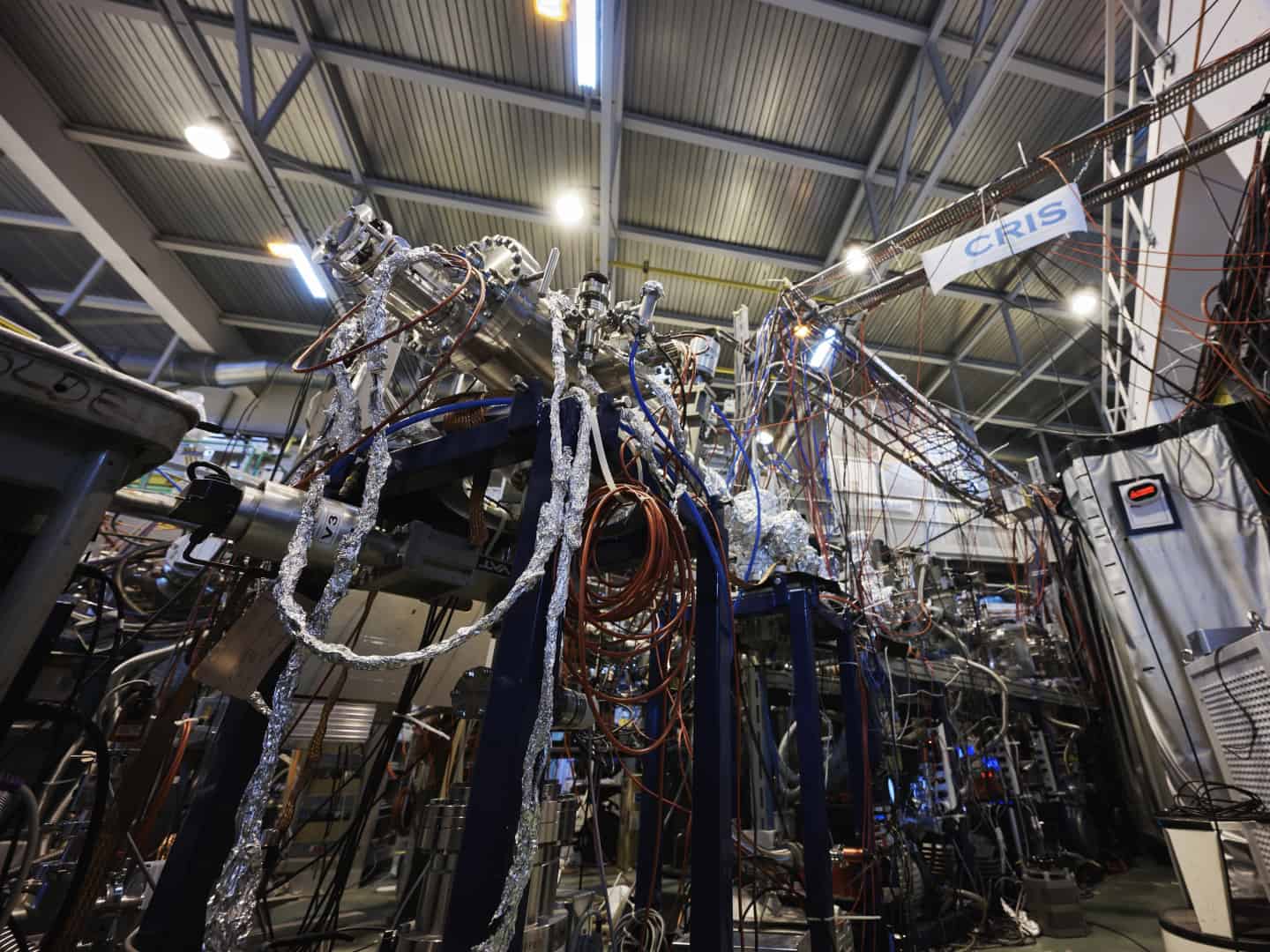
The first spectroscopic study of radium monofluoride suggests that the radioactive molecule could be used to perform high precision tests of the Standard Model of particle physics. The study was done by an international team of physicists working in the ISOLDE lab at CERN and could lead to a new upper limit being place on the electric dipole moment of the electron – which could help explain why there is much more matter than antimatter in the universe.
Atomic and molecular spectroscopy allows physicists to make extremely precise measurements of some fundamental properties of both electrons and nuclei. As a result, spectroscopy offers a way of determining whether a particle like the electron conforms to the Standard Model of particle physics.
Radium monofluoride is a molecule of particular interest to physicists because in certain isotopic versions of the molecule, the radium nucleus is deeply asymmetrical – having a pear-shaped mass distribution. This, and the high mass of radium, means that it is ideal for studying the fundamental properties of the bound electrons – including whether the electron has an appreciable electric dipole moment.
Time reversal symmetry
It is well known that the electron has a magnetic dipole moment, which is a result of the particle’s “spin”, or intrinsic angular momentum. However, time reversal symmetry – a tenet of the simplest version of the Standard Model – forbids the electron from also having an electric dipole moment.
While more complicated versions of the Standard Model allow the electron to have an extremely small electric dipole moment, measuring a substantially higher value could point towards new physics beyond the Standard Model. This would be of great interest to cosmologists because it would reveal a fundamental symmetry breaking in the early universe that could explain why there is much more matter than antimatter in the cosmos.
The short-lived radium monofluoride molecules were created at ISOLDE, which produces beams of exotic radioactive particles that can be ionized and trapped with electromagnetic fields for further study. The team used the Collinear Resonance Ionization Spectroscopy (CRIS) instrument on ISOLDE, which enabled them to study even very low amounts of particles with high precision.
Short lived molecules
The results provide the first spectroscopic information of radium monofluoride, including isotopologues — molecules that differ only in their isotopic composition — composed of radium isotopes with half-lives as short as a few days.
Writing in Nature, nuclear physicist Ronald Garcia Ruiz and colleagues describe how they determined that the molecules have energy levels that should allow them to be laser-cooled to temperatures just above absolute zero. This is a necessary condition to allow for the extremely high-precision measurements needed to find deviations from the Standard Model. Garcia Ruiz, who works at the Massachusetts Institute of Technology (MIT) and CERN, is currently setting up a new collaboration between MIT and ISOLDE, to reignite the quest to measure the electron’s electric dipole moment.
“We want to narrow further the gap between our most sensitive measurements, and the theoretically predicted value of the dipole moment”, says Gerda Neyens, a nuclear physicist at the KU Leuven in Belgium and ISOLDE’s head of research. “The value in the Standard Model is extremely small, and way out of the current experimental range. But by closing in we can already constrain on certain theories that predict much larger values.”
